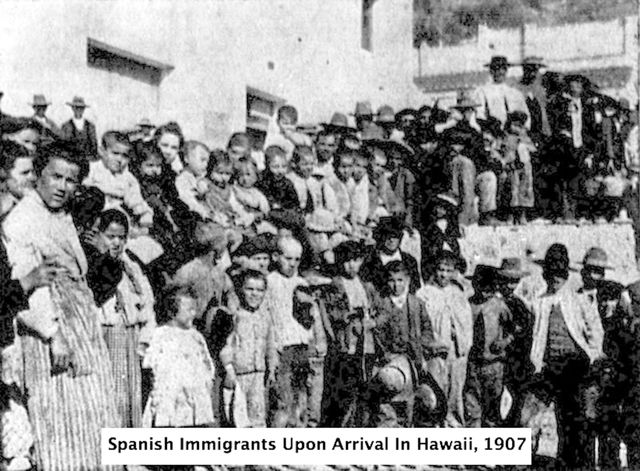On April 26, 1907, the British steamship “SS Heliopolis,” originating from Malaga Province, Spain, arrived at Honolulu Harbor with 2,246 Andalusian Spanish immigrants aboard, destined for settlement at sugar plantations located throughout Hawaii. The 608 men among them were the
On April 26, 1907, the British steamship “SS Heliopolis,” originating from Malaga Province, Spain, arrived at Honolulu Harbor with 2,246 Andalusian Spanish immigrants aboard, destined for settlement at sugar plantations located throughout Hawaii.
The 608 men among them were the first Spaniards recruited by the Hawaii Sugar Planters’ Association with the approval of the Hawaiian government to emigrate to Hawaii to work as contract laborers on Hawaiian sugar plantations; a good number of the remainder — 554 women and 1,084 children — would also find employment on the plantations.
Over the next few days, these new immigrants settled in their new environments and began work in the cane fields.
An article published in the May 9, 1907 edition of Honolulu’s The Pacific Commercial Advertiser stated that the Waimea, Kauai district “received a number of new residents last Wednesday, May 1, 1907, Spaniards from the “Heliopolis.”
“Kekaha and Makaweli were both allotted fine people. Out of the 66 who came to Kekaha, only one man was unmarried, the balance was made up of 15 families.
“Kekaha Plantation is putting up a number of nice, new cottages for the new Spanish laborers. They are located opposite the mill and will be conveniently near both to factory and the railroad.”
Those cottages, situated on the mauka side of Kekaha Road, became known as Spanish Camp.
Eventually, the Kekaha Arena was built and developed at Spanish Camp in the early 1960s as the main venue of the West Kauai Saddle Club.
Neither Spanish Camp nor the Kekaha Arena now exist.
Although these Spanish immigrants — and other Spaniards that followed them to Hawaii over the next few years, for a total of 9,262 — proved to be satisfactory plantation workers, most of them emigrated to the U. S. Mainland to seek greater opportunities, so that by 1930, the U. S. Census listed only 1,219 residents (0.3 percent of the population) of Spanish ancestry remaining in Hawaii.



